Old European Cut Diamond Engagement Rings
Old European cut diamonds have come a long way since their rise to popularity during the Victorian, Edwardian and Art Deco eras (1870s – 1930s). When it was first introduced, the old European cut marked a significant breakthrough in the way diamonds were polished. It also set the development groundwork for the modern day round brilliant cut.
In recent years, there had been a growing demand for vintage style jewelry and a revival of interest towards old world diamonds. Given the frequent emails and questions I receive about them, I figured it’s time to do a comprehensive write up.
Hopefully, this article will help you gain a better understanding of old European cut (OEC) diamonds and provide some insights to selecting them.
What is an European Cut Diamond – The Defining Characteristics
As the name suggests, old European cut diamonds were first developed and introduced in Europe. At that time, the Europeans had a monopoly on the diamond mines in Africa (think De Beers) and the most advanced gem cutting expertise in the world.
Interestingly, vintage stones were cut in a manner where they would excel in dim lighting conditions (i.e. candlelight). Remember, this was a period of time where people relied on candle and gas powered lighting instead of electrical lighting.
The antique European cut diamond has a blocky facet pattern designed to capture light via its table and pavilion. Because of its unique structure, the diamond’s scintillation and interplay with light was unrivaled at that time.
Here are some defining characteristics of OECs:
2) Deeply cut proportions
3) High crown angles
4) Short lower girdle facets; chunkier appearance
5) Displays a tint of warm color
6) Open culet
Antique European Cut Diamonds in the Present Day
The problem with antique European cut diamonds is that they were polished during a time where there was limited manufacturing capabilities. You see, back in the 19th and early 20th century, cutters only had basic tools to help them shape diamonds on a spinning wheel.
On top of that, 3D computer modeling, imaging tools and the understanding of optical performance were practically non-existent. This is why many old European cut diamonds have haphazard symmetry and are cut to proportions that retain maximum weight from the rough stone (instead of sparkle!).
Not surprisingly, many of these antique stones often end up with “Fair” of “Poor” ratings for Polish and Symmetry when they are sent to grading labs. Here’s an excerpt of a grading report for a typical old European cut diamond found in today’s market:
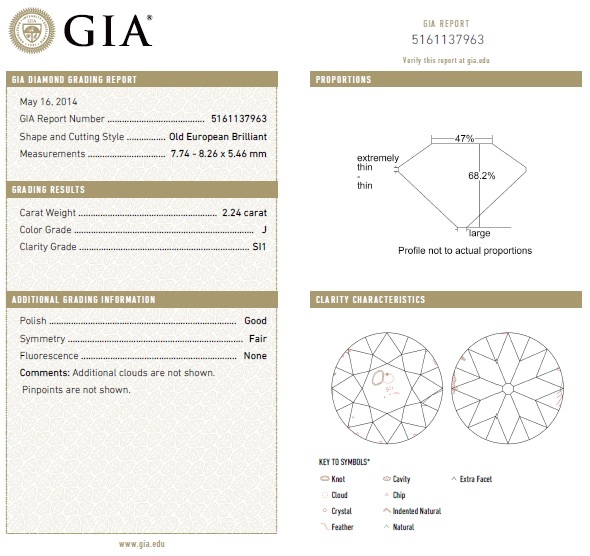
As you can see above, the OEC diamond has dimensions that indicate a severely off-round shape. Besides poor finishing standards, it also has an extremely thin girdle which is detrimental to the stone’s durability.
Cut Quality And Light Performance Matters!
Sadly, you can expect the majority of existing OECs in the market to possess dismal craftsmanship when compared to today’s cutting standards. And that’s where many consumers run into difficulties when searching for a nice looking OEC diamond.
Here’s an example to illustrate what I mean:
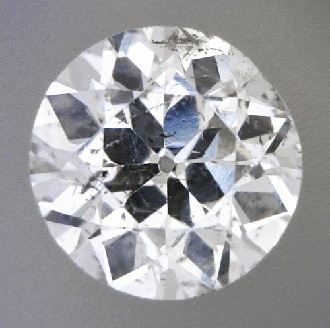
The diamond on the left displays too much darkness in the center of the stone caused by a poor combination of pavilion and crown angles. Also, the diamond’s shape appeal is dismal and you can easily tell this from its elliptical outline.
Don’t get me wrong, I know there are people who like the fugly look of a distorted, out-of-shaped diamond with mediocre light performance. There’s nothing wrong with that and I do respect individual preferences.
However, if you are like me and the majority of consumers, you probably want a diamond that sparkles well and looks pleasing to the eye. And luckily for you, I do know where you can find well cut OECs like the one below…
Victor Canera’s OEC features ideal light performance and symmetrical contrast patterning.
What Makes Victor Canera’s European Cut Diamonds Any Special?
I can simply sum it up in two words – Light Performance. When it comes to dictating the beauty of a diamond, cut quality is the most important factor that corresponds directly to the amount of sparkle it has. And this is where Victor Canera’s European Cut diamonds really shine!
Designed for optical performance, each Canera European Round is crafted with extreme precision. The perfectly aligned facets and superlative finish are also underlying reasons why they outperform other OECs in optics.
Review of Victor Canera’s European Round Diamonds
Readers who follow my blog will know that I’m a proponent for cut quality and I place emphasis on a diamond’s cut over the other Cs. The rationale is simple; cut has the largest impact on a diamond’s beauty and appearance.
When I personally shop for diamonds, I always look out for tangible data to make educated purchase decisions. If you want to be a smart shopper, I urge you to do the same too. You should never rely on a vendor’s claims in blind faith.
This is the reason why I only recommend vendors who provide clients with all the necessary information to make an educated purchase. And when it comes to vintage cut diamonds, Victor Canera is a vendor at the top of my “A” list.
Let me show you what I mean by reviewing a diamond listing on his website. If you want to, feel free to click on this link to see full details: https://www.victorcanera.com/diamonds/gajj14
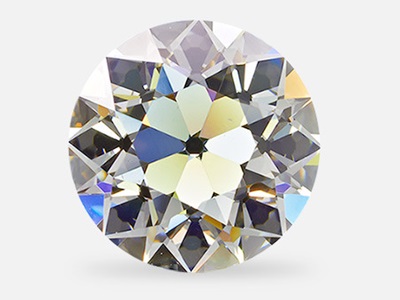
Crystal clear image of the diamond captured at 10X.
First of all, you are greeted by the sight of a diamond image captured under high magnification. Photographs like this will give you the ability to scrutinize a diamond upclose and reveal details you might not be able to notice otherwise.
And best of all, you don’t even need to learn how to use a loupe or squint your eyes to be able to examine the stone like a professional. A clear image like this removes uncertainty and shows you exactly what you are getting.
Beyond that, there’s a wealth of information you can glimpse from such images. In this example, this diamond displays a pleasing optical symmetry in its facet structure and the inclusions of the diamond are eye-clean.
ASET & Idealscope Image of Victor Canera’s Ideal Cut European Round
Regardless of where you intend to buy your diamonds from, ASET and Idealscope images are crucial data you should ask for. This is especially true if you are a lay person because they can help you determine a diamond’s optical performance in an objective manner.
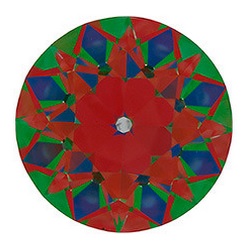
ASET
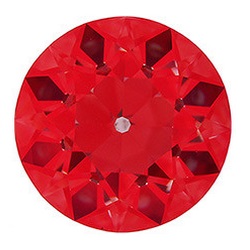
Idealscope
Having reviewed the data myself, I can verify that Victor Canera’s European Rounds are indeed designed for optical performance. From the ASET image, this is evident in the saturated red colors found under the table facet; indicating areas of intense light return.
The contrast patterning (blue colors) displayed by the diamond is also symmetrical and will create a pleasing appearance. On the other hand, the green color represents areas with less intense light return which helps define the characteristic look of an OEC.
In the video below, you will be able to see how the light performance data actually translates into a lively and brilliant diamond in real life.
Don’t you just love the colored flashes of light firing off the diamond in the spot lighting environment? Personally, I’m a huge fan of the pastel colored reflections given off by the vintage cut diamond in diffused day lighting.
European Cut Diamond Ring Designs And Settings
Diamonds only make up half the equation when you are shopping for an engagement ring. In my opinion, the best settings for OECs are usually designs that highlight the center stone and feature intricate ring details.
If you are shopping for a piece of high quality jewelry, Victor Canera offers a wide range of ring designs that are hand-forged to perfection. Check out some of his designs below…
The Sophia Solitaire With 3ct Canera European Round
This unique-looking ring features a Canera signature OEC diamond mounted in a double clawed solitaire setting. On the shanks, graduated French cut diamonds are carefully lined up to create an accent effect. As a finishing touch, milgrain edges provide an additional level of detail to the ring.
Old European Cut Diamond in Bezel Halo
Hand forged in platinum, this vintage style engagement ring features a bezel set diamond surrounded by a milgrain edge. The center stone is further highlighted by a halo of melee diamonds which gives the ring additional sparkle and brilliance.
To achieve an all-round antique feel to the ring, vintage single-cut melees are used to match the old European cut center stone. While seemingly minor details like this may be overlooked by many bench jewelers, Victor Canera’s perfectionism and attention to details sets his craftsmanship standards apart from others.
OEC Solitaire in Multi-Row Pave
A breathtaking ring which showcases multiple rows of micro-pave diamonds along its shanks. To add to the glamour of the ring, the open-concept basket setting is embellished with diamonds for the ultimate sparkle factor.
Regardless of the direction you view the ring in, this shimmering ring will look spectacular and draw attention across the room!
Wrapping Things Up With OEC Diamonds
Vintage cut diamonds are beautiful relics from our collective past. They represent an era of romance and charm that modern diamonds can never replicate; and is probably why more and more people are so drawn towards them.
If you are searching for diamond jewelry with a unique vintage flair, old European cut diamonds may just be the thing you are looking for all along. With that said, if you ever have any questions about diamonds, feel free to leave a comment below or get in touch with me via email.
All the best in your search!
Related Articles
Leave A Comment

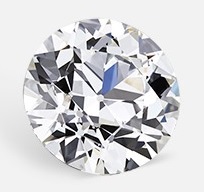
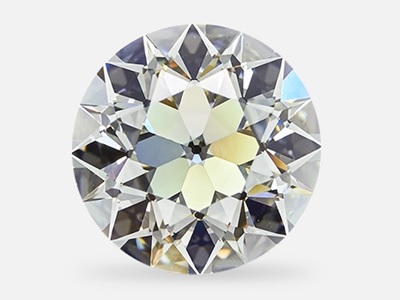
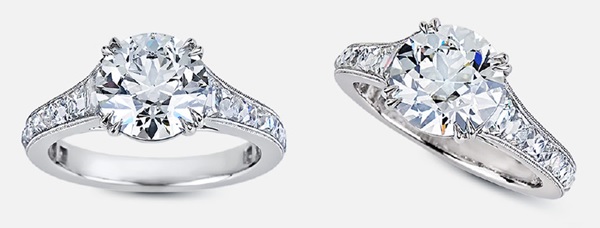
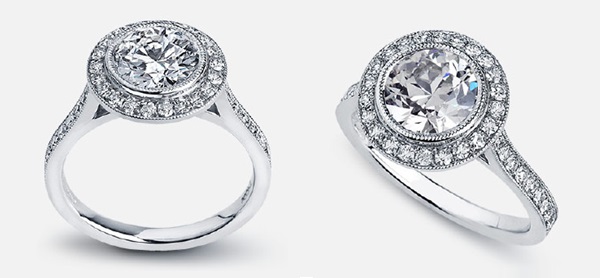
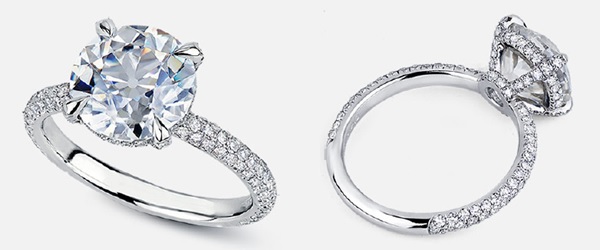

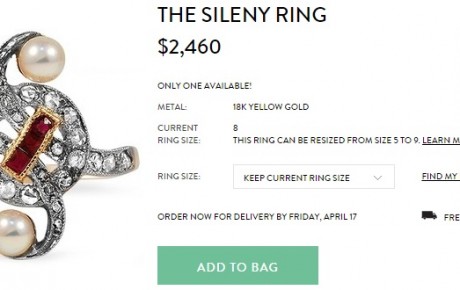
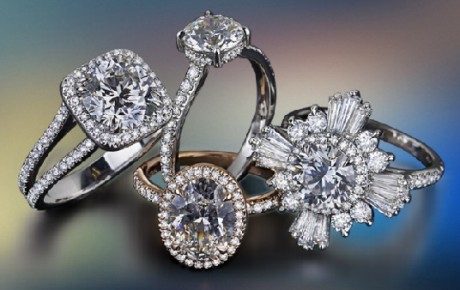
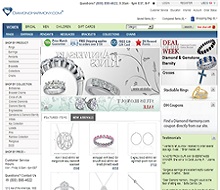









4 Comments
Hey Paul please add me to your email group as I am not able to receive your valuable articles. I’m interested to get more content on antique diamonds and vintage rose gold ring designs.
Sure! In the meantime, you may want to check out this blog post that is newly written: https://beyond4cs.com/jewelry-guide/vintage-rose-gold-engagement-rings/
I just read a good number of posts on your site and wanted to reach out for your opinion on this ring I’m potentially interested in. The seller is trying to get $8250 for it. He inherited it recently from his grandma.
The appraisal says, “It’s a 14KT yellow gold ladies diamond solitary engagement ring with round shape center stone is Old European cut and with facet on the cutlet, is measuring 7.96mm and is weighing approx. 2.00 ct and is VS1 in clarity and F in color. The diamond is secured with six prong vintage style setting and is 14KT white gold. The ring has engraving in the shank with a date of Aug 14th 07.
Notes: the center diamond is containing abrasions marks and wear marks like chips and nicks and the girdle and girdle facets from natural wear. Total replacement value of ring before tax is eleven thousand dollars.”
Do you think it’s appropriate? Too good to be true?
I’ve also have the appraisal that a local gemologist did and a couple of photos if you need more info.
Well, an appraisal document is not an accurate representation of the diamond’s qualities and these documents are normally grossly inflated to sucker unsuspecting consumers into a bad deal. Offhand, I can see that you are in for a big rip off and going to overpay for a lousy diamond.
Get the diamond graded by AGS or GIA if you are serious about buying the diamond and MAKE the seller sign a clause that the specifications of the appraisal MUST match the results. The best thing to do is just to avoid this ring altogether.